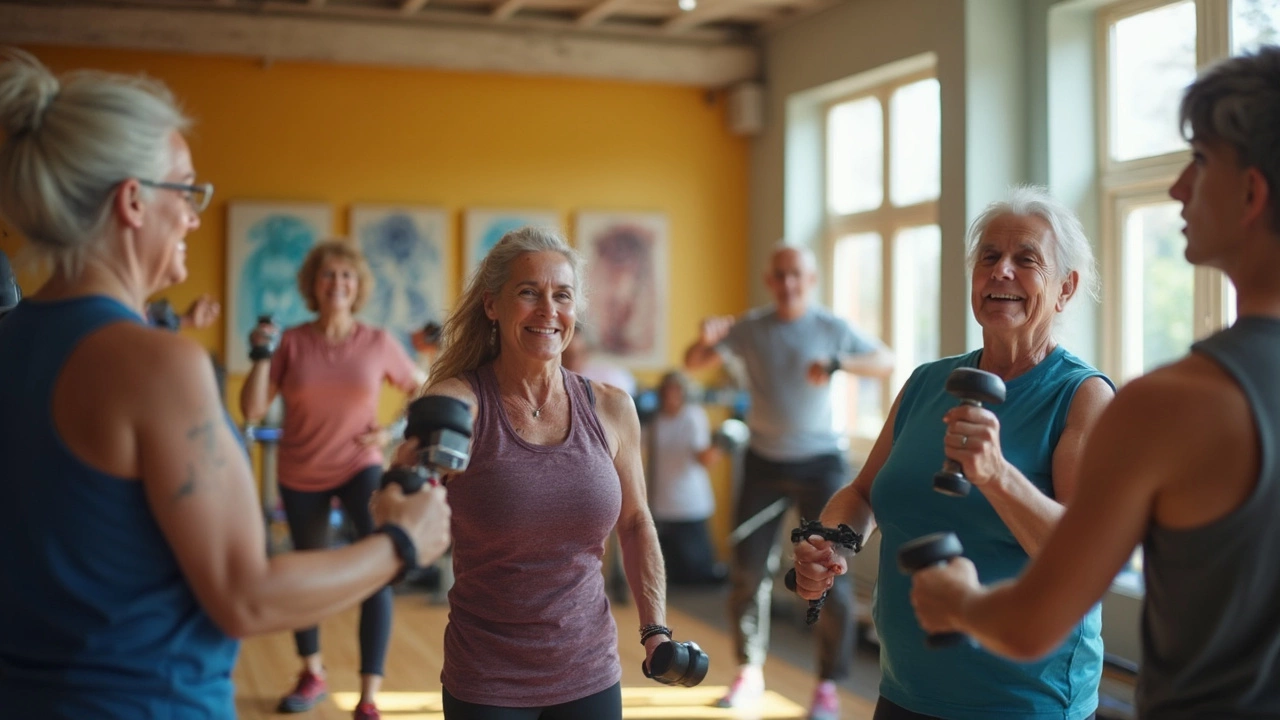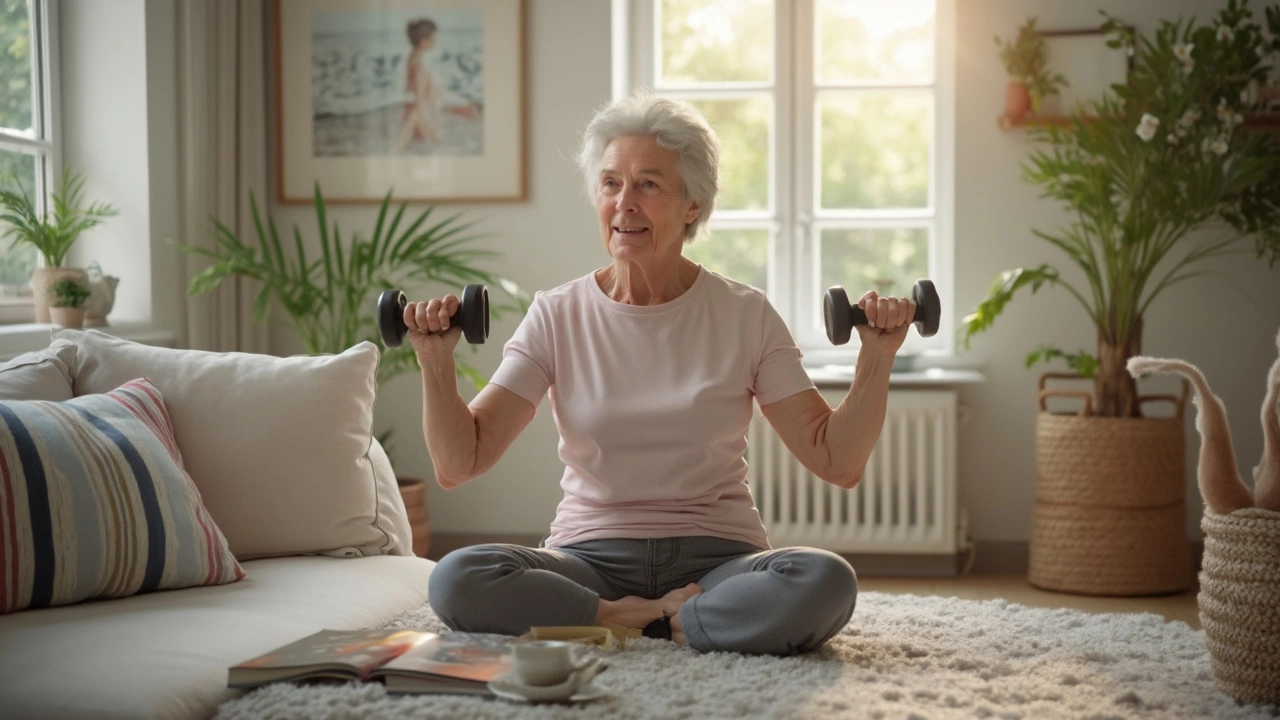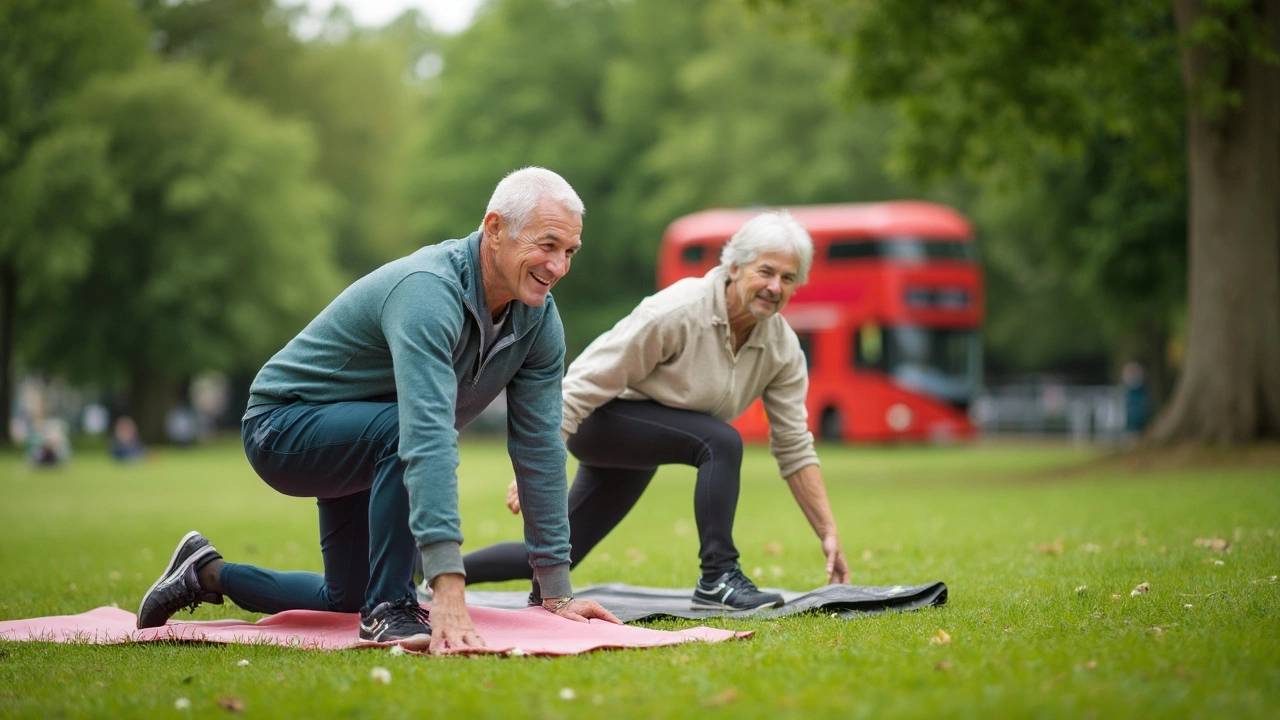Strength Training Over 50: Easy Guide for Beginners

What if I told you turning 50 could be the spark for building the strongest version of yourself? Yup, muscle doesn’t follow an age calendar. It listens to what you do today — and strength training is one of the best moves you can make for your body, your brain, and even your happiness. Forget outdated myths about getting too old for weights or workouts. Science is crystal clear: it’s never too late to rewrite the story your muscles tell.
Why Strength Training Matters More After 50
Past fifty, something wild happens: our muscles start calling it quits unless we give them a good reason to stay. It’s called sarcopenia, the fancy word for muscle loss that can chip away at your strength, balance, and even bone mass if you let it slide. Around 1% of muscle is lost each year after hitting forty, and by age seventy, some people have lost up to half their muscle mass. That’s a recipe for a wobbly future — unless you act now.
Building muscle over fifty isn’t just about flexing for Instagram. It’s about keeping your balance, getting up easily from the floor or a deep chair, filling grocery bags without grunting, or running upstairs for a forgotten phone. What a lot of people don’t know: lifting weights or using resistance bands can cut your risk of falls by almost 40%. More strength now means fewer broken bones and hospital visits later.
Let’s talk brains and hormones, too. Strength training helps revive your metabolism, so you burn calories even at rest. It gives joints extra support, making walks, hikes, and picking up grandkids feel like a breeze. On top of that, studies from Harvard and the Mayo Clinic both found that adults who did just two days of muscle-building moves each week slashed their risk of type 2 diabetes by 30% or more. Add that to better sleep, sharper memory, and an instant mood lift from every single workout — there’s a reason doctors call resistance training "medicine you can’t bottle."
Here’s some hard facts in an easy table, bringing the benefits into focus:
| Strength Training Benefit | Impact After Age 50 |
|---|---|
| Muscle Mass | Can increase by 1-2 kg in 12 weeks with regular training |
| Bone Density | Reduces risk of osteoporosis by up to 40% |
| Fall Risk | Cuts chance of falls by almost 40% |
| Diabetes Risk | Lowers risk by 30% or more |
Still think it’s too late to start? Research by the University of Alabama found that people over 60 who lifted weights for 16 weeks boosted their muscle strength by nearly 40% — about the same as much younger adults. Your body’s not broken; it’s waiting for you to wake it up.
Breaking Down the Basics: What Counts as Strength Training?
If the phrase “strength training” brings up a picture of huge barbells or crowded gyms, time to toss that out. You don’t need a home gym or fancy equipment. Bodyweight moves — think squats, push-ups (yes, they count if you do them against a wall!), or sitting and standing from a chair — can all build muscle. Strength training over 50 just means you’re making your muscles work harder than they’re used to, with anything from canned beans to stretchy bands to light dumbbells.
Here are some classic and easy-to-get-into strength moves that most beginners over 50 find helpful and safe:
- Wall push-ups: Great for shoulders, chest, and arms, and you can do them anywhere.
- Chair squats: Use a sturdy chair, sit, and stand with control. Your thighs and glutes will thank you.
- Resistance band rows: Anchored bands help work those pulling muscles in your upper back, which tend to get weaker with age.
- Step-ups: Step onto a low stair or box, emphasizing slow and steady movement for balance training.
- Overhead arm presses: Use soup cans or light weights and press them overhead to wake up those shoulder muscles.
The secret sauce is slow and controlled movement. Speed isn’t your friend here. Instead, try lifting in 2 seconds, and lowering in 3-4 seconds. Focus on good form (you want the muscle to do the work, not momentum). Start with just two sets of 8-12 reps, then add a little more every 1-2 weeks. Consistent, gentle progression beats “all out, then burnout” — every time.
You really don’t need to commit hours and hours. In fact, three 30-minute sessions a week can make a massive difference. If you’ve got more time, add some balance moves like standing on one leg while brushing your teeth or heel-to-toe walking. Little tweaks and you’ll be building muscle and balance all at once.

Getting Started: Safe Steps for Beginners at 50 and Up
Alright, you’re pumped — but don’t rush straight into lifting heavy or doing exercises you haven’t tried since gym class. Safety first, always. If you have any major health conditions such as heart disease, osteoporosis, or arthritis, check in with your doctor or a physical therapist. Most doctors will cheer you on but may offer adaptations for certain medical issues.
Start your strength session with a gentle 5–10 minute warm-up. March in place, circle your arms, swing your legs loosely, or go up and down your hallway. Your muscles and joints love a gentle wakeup call before any real lifting starts.
Then, ease into your workouts with moves that target the biggest muscle groups. Always listen to your body. A little soreness after the first week or two is normal (that’s your muscles growing!), but sharp or shooting pain isn’t. If you ever feel dizzy, stop and rest.
Posture is huge. Don’t shrug through your reps. Stand tall, shoulders back, engage your abs a bit, and breathe steadily. If you’re not sure about form, free videos from groups like SilverSneakers or the YMCA often show safe technique for every major move. If you feel unsteady, start by holding onto the back of a sturdy chair.
Your first plan could look like this:
- 5–10 minute warm-up (walking, light marching, arm circles)
- 2 sets of 8–12 wall push-ups
- 2 sets of 8–12 chair squats
- 2 sets of 8–12 overhead presses (with light weights)
- 2 sets of 10–15 resistance band rows
- 5–10 minute cool-down with light stretching
Take at least one day off between sessions, and embrace rest. Muscle doesn’t grow in the gym — it grows while you’re recovering. And honestly, you might feel fatigue for a couple of weeks at first. Stick with it and your energy will rebound—usually faster than you expect.
If it helps keep you accountable, track your progress. Write down the moves, sets, and weights each day. Watching your strength climb week after week is pure motivation. Some people also enjoy joining group classes or working with a “buddy” — it’s more fun and less lonely.
Nutrition and Recovery: Feeding Strength at 50+
Here's the secret many overlook: muscles don’t build themselves. After fifty, your body’s natural "muscle fuel" slows down. You need a bit more protein than you did when you were 25 (and you likely weren’t paying attention to it then, right?). Think of protein as scaffolding: it directly feeds your muscles so they get stronger, not just tired.
The consensus? Aim for 1.2–1.5 grams of protein per kilogram of body weight daily. A 150-pound person weighs around 68 kilograms, so that’s roughly 82–100 grams of protein per day. Spread it out: a little for breakfast, lunch, and dinner. Good options include eggs, fish, Greek yogurt, beans, lentils, and lean meats. Plant-based is fine, too — just get the total in.
And about carbs: don’t ditch them. These fuel your workouts and help your body recover. Go for whole grains, fruits, and plenty of veggies. Healthy fats — avocado, nuts, olive oil — keep your joints happy and inflammation in check.
Hydration is a big deal as you age. You’ll need more water than you might think, especially during and after workouts. Aim for at least 6–8 cups per day (and more when you sweat). Dehydration can sneak up, showing up as dizziness or muscle cramps — so keep a water bottle handy.
Your golden rule? Prioritize sleep. Recovery is when muscles repair, and that’s key for strength and mood. Adults over 50 do best with 7–9 hours per night. Try to keep screens out of the bedroom, keep it cool and dark, and wind down with a few stretches or a book instead of scrolling late into the night. No shame in early bedtimes — your muscles will love you for it.

Staying Motivated: Building Habits and Seeing Results
Let’s be real, sticking with something new is always hardest in the early weeks. The soreness fades, but routines can get boring or overshadowed by “life stuff.” Two key tricks: make your strength training enjoyable, and track tiny wins.
Start with goals that excite you. Maybe you want to carry heavy groceries without feeling wiped, or travel to Paris and climb all those stairs without a pause, or just feel strong enough to keep gardening for years. Write them down and keep them visible. Those are YOUR reasons — not some trainer’s idea of success.
Social support is everything. If you don’t have a workout buddy, join a class, find a local walking group, or check online communities focused on people 50+. People cheer for each other, swap tips, and keep each other laughing during rough patches.
Here’s another tip that’s great for accountability: reward yourself. After a week of consistent workouts, treat yourself to some fresh workout gear, a favorite book, or a new show. Positive rewards—not just the long-term health benefits—help habits stick for the long haul.
You may not notice dramatic change in the first month. That’s totally normal! Most people see strength gains and better energy first, then muscle tone, smaller waistlines, and fewer aches after 2–3 months. Don’t let the scale fool you. Remember, muscle weighs more than fat, so even if your weight stays put you’re trading soft for strong.
Track your progress beyond the mirror: can you lift heavier? Get through a session with less breathlessness? Stand up from a chair without using your hands? No win is too small. Every one means you’re getting closer to living life your way, on your own terms.
The best trick? Fall in love with the feeling of being strong. Training at 50 isn’t about chasing a younger body; it’s about building confidence and capability for your brightest years. Stack one good habit on another, and you’ll be surprised at just how much you can do—and how quickly strength, energy, and joy return.